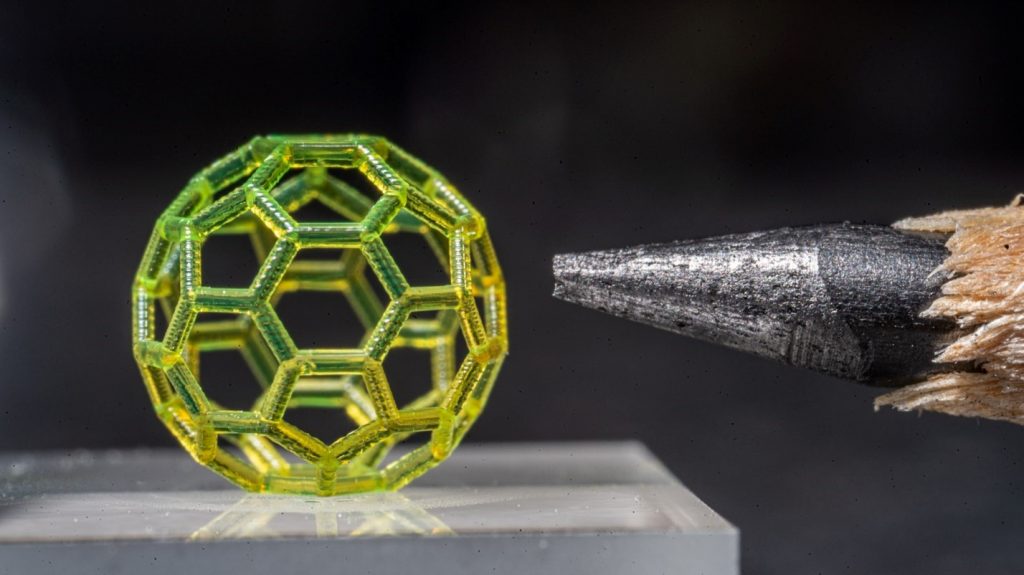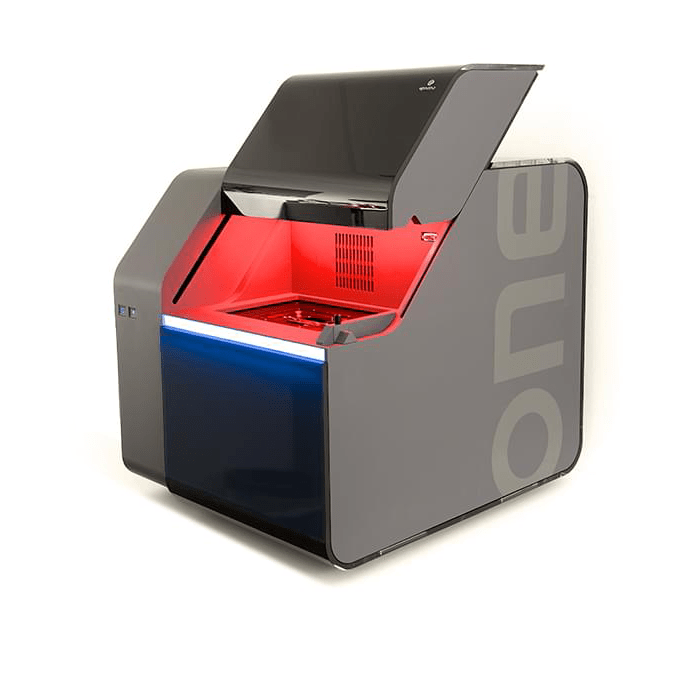While FDM might be the mainstay of polymer 3D printing, it has a resolution limit in the order of 300µm. To go beyond these limits one needs to look at resin-based printing technologies such as stereolithography and 2 photon polymerisation (2PP). Stereolithography processes like Projection Micro Stereolithography or PµSL can achieve a resolution of 2µm, but what if you want to go beyond that, into the sub-micron realm? This is where 2PP really comes into its own.
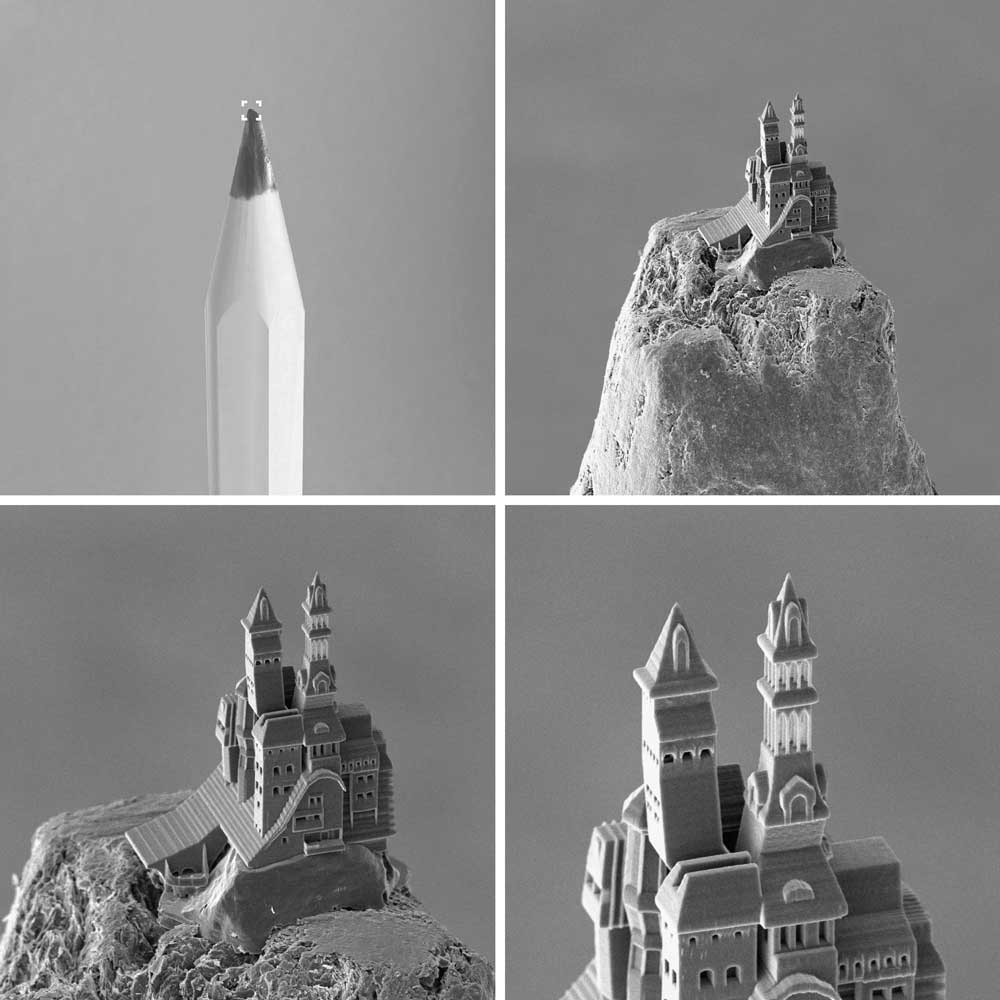
In the 2PP 3D printing arena the UpNano NanoOne is unmatched. Able to microfabricate features with a resolution of 170nm and a rate of better than 450mm3/hr successfully blends resolution and speed into an industrially relevant 3D printer capable of producing components with complex geometries for academic research and industrial applications, satisfying the needs of design engineers who continue to continue to push the bounds of miniaturisation. Furthermore, the running costs and materials make 2PP an economical technique for producing high resolution components.
The 2 Photon Polymerisation (2PP) Printing Process
2PP printing technology takes advantage of the spatial selectivity of 2-photon absorption (2PA), i.e. polymerisation takes place at the point where the two photons simultaneously converge, i.e. pulses from a femtosecond laser. This enables 3D structures to be directly created in a resin vat with a spatial resolution better than 1µm. The higher spatial resolution is made possible by the fact that 2PA significantly reduces beyond the focal point, i.e. there is insufficient energy to induce polymerisation beyond this point. This reduced fluorescence volume results in higher spatial resolution.
This figure represents single and multi-photon beam paths compared using fluorescent microscopy. With 2PA only occurs at the focal point of the beam, meaning that monomer crosslinking takes place in this plane. Conversely, in the case of single-photon absorption (per other techniques such as stereolithography), emitted light is absorbed along the whole beam, leading to a reduction in resolution.
The spatial selectivity of 2PP allows printing directly within the resin volume. This is an advantage over r SLA processes which require repeated material coatings to be applied to build up the component volume. This process can induce stresses on fine structures during the printing process.
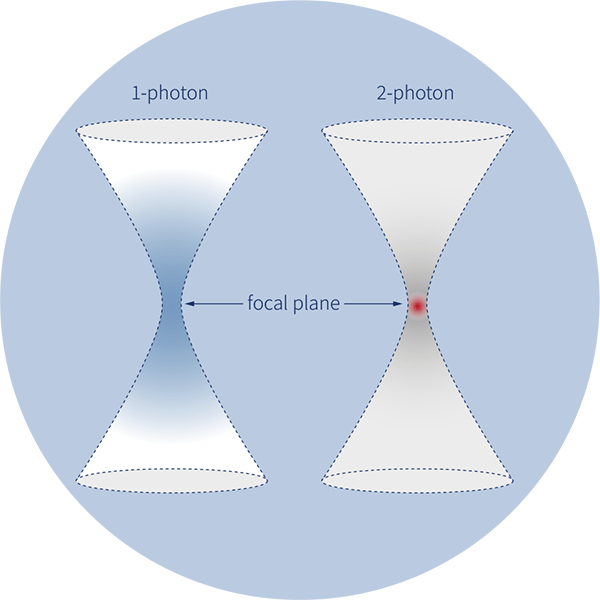
Optimising Speed and Resolution – Adaptive Resolution
The UpNano NanoOne uses a patented technology called Adaptive Resolution to maximise print speed without compromising resolution. The intelligent software is able to classify regions as high or low resolution. It can then adapts the voxel size accordingly, automatically enlarging the laser focal spot for low resolution regions, thus increasing the print speed. Similarly, it can reduce the focal spot size for high resolution regions allowing it to achieve resolutions in the nanometer size range. In either case, polymerisation remains unaffected so there is no effect on mechanical properties.
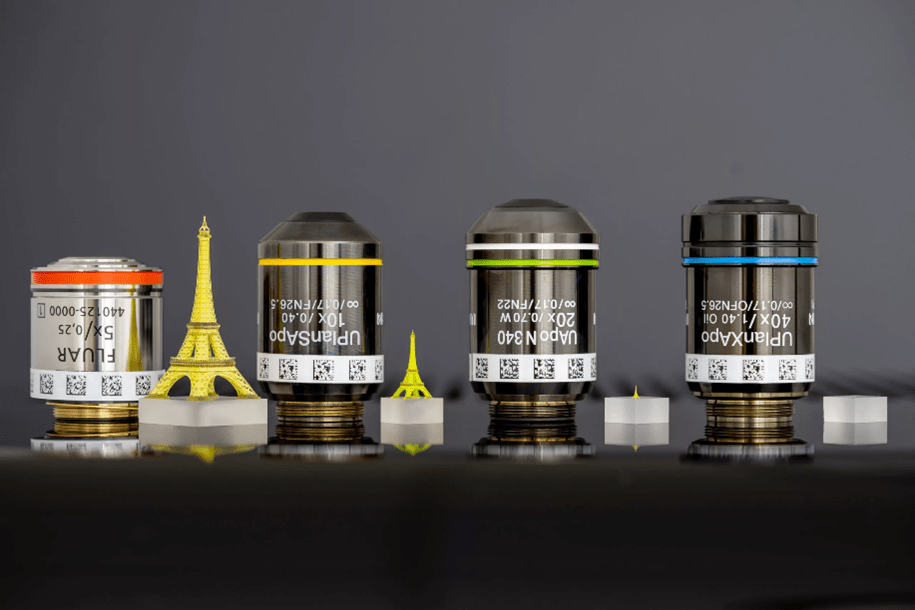
Other Printing Modes
Outline Mode
Another proprietary innovation from UpNano, Outline Mode enables users to create high-resolution, low surface roughness (<10nm) surfaces.
Vat Mode Printing
Unique to the NanoOne, Vat Mode enables the printing of large objects up to 40mm tall.
In this mode a vat with a precision glass window is placed above the objective, isolating the resin from the lens. During the printing process the object is drawn up out of the material vat, while the distance between the print surface and the objective remains constant.

Bottom-Up Mode
In this mode, high-resolution parts can be fabricated directly within the substrate. Here the laser is focussed through the high-precision glass bottom of the substrate and the components is built from the “bottom-up”. Example substrate include petri dishes and microfluidic chips.

Materials Suited to 2 Photon Polymerisation Printing
UpNano offer a range of 2PP resins that are compatible with their NanoOne 3D printers. These are optimised for properties such as resolution, optical transparency (for optical and microfluidic applications), biocompatible formulations for biomedical research, high-performance formulations for ultimate strength or temperature capabilities and even silica ceramic formulations for producing fused quartz micro components.
Applications
2PP is ideally suited to the microfabrication of high precision parts that require sub-micron features. The NanoOne can print generate parts with a surface finish that rivals injection moulding up to 40mm tall.
With output limited only by the operators imagination, some examples of what can be produced using 2PP technology include:
- Extra cellular matrices
- Lab-on-chip devices
- Optoelectronics
- Photonic devices
- Micro needles
- Filter elements
- Micro mechanical devices
- Microfluidic devices
- Micro lenses
